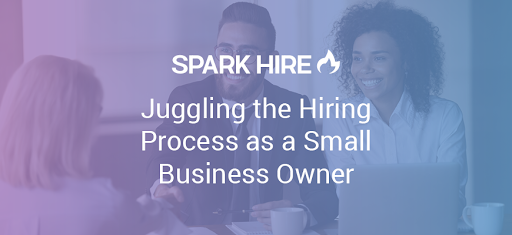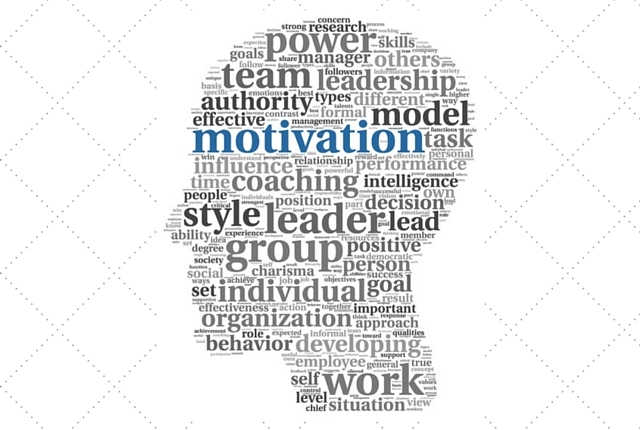As a small business owner, you have a lot on your plate. While it might not always feel this way, bringing new staff on board should make your life easier and help you grow your business.
You probably don’t have a dedicated HR team. You are your HR team! But because you’ll be working closely with your future employees, you want to avoid outsourcing hiring to a staffing agency and ensure they’re the right fit for the position yourself.
In this guide, we’ll take a look at how you can use a range of strategies and tools—from delegating tasks to leveraging customizable retail point-of-sale (POS) systems—to simplify your effort at each fundamental step of the hiring process:
- Recruiting
- Selecting
- Onboarding
That way you can focus on running and growing your business, rather than close-reading every resume that comes through the door.
Recruiting
These days, amid an increasingly selective applicant pool, it isn’t an easy task for a small business to stand out to the best prospective employees while also remaining within its available time and resources. However, while daunting, it’s far from impossible.
Follow these steps to save time and money and attract the best applicants during your recruitment phase:
Delegate, Delegate, Delegate
The first step for recruiting employees is generating a compelling, detailed job description and advertising the posting via a variety of social media, job boards, and word-of-mouth channels.
But you don’t need to do all of this by yourself. Ask high-achieving employees and managers to take on additional responsibilities to write and market job descriptions. Moreover, if you give your managers agency to help pick the people they’ll be managing, they’ll be more invested in their team’s growth and engagement.
Build a Hiring Matrix
As applications begin to come in, use a hiring matrix—a simple numerical rubric to assess applicants—to sort and filter for the best candidates. Your matrix can address a variety of criteria, including:
- Work history
- Leadership skills
- Interpersonal skills
- Qualifications
- Writing skills
Additionally, as you move toward selecting an employee, a hiring matrix can help you make the right hiring decision according to your established criteria.
Leverage Talent Management Software
You may have hundreds if not thousands of applications for a single position. Instead of reading every single one, save time and effort by using software to source, screen, interview, and track talent. Not only does talent management software make your life easier, candidates appreciate the more streamlined, direct experience it offers them.
Moreover, as you move on to the next phase of choosing your employee, your software alongside your delegated team and hiring matrix can help clarify your final decision.
Selecting
Hopefully, you now have a generous pool of highly-qualified prospective employees. Now comes the hard part. Choosing the right candidate is a big deal, especially when replacing an employee can cost businesses 50 to 60 percent of that employee’s salary!
Therefore, pick your future employee carefully. Ideally, you want your employees to stay with your business, take on leadership roles, and help you grow into new markets.
Establish a Clear Interview Process
Before you move forward in the hiring process to interview your top candidates and check their references, you need a process for what your interviews will look like. This should include:
- Preparing a script and list of questions that you’ll ask every candidate
- Having your hiring matrix on hand
- Meeting in-person or over video (and recording meetings for review)
Established processes will keep you on track during interviews and help standardize your decision-making to remove variables that might impact candidates’ interview performance.
Ask the Right Interview Questions
Effective interview questions can help you quickly determine if an employee is a good fit for the role, save you time during the hiring process, and help you retain them long term. Ask questions that push beyond the expected “What’s your biggest strength?” and “What’s your biggest weakness?”
Instead, try asking the following questions to evoke a more revealing response:
- What do you know about our organization?
- If you were recruiting for this position, what are the things you’d be looking for?
- What’s an unpopular management decision you made and how did your team handle it?
- What’s motivating your job search?
- How do you show kindness and consideration to your colleagues?
- What are your passions inside and outside of work?
- Why did you leave your previous job?
- What is your ideal work environment?
- Explain a time when you demonstrated _________?
- What would your perfect day at work look like?
When you know exactly what motivates and fulfills your candidates, you can determine if you can meet their expectations. Remember to reserve time for candidates to ask you questions. As much as you’re deciding if they’re right for you, they’re also deciding if you’re right for them.
Make an Employee Handbook
That being said, many of your potential candidates’ questions can and should be answered in your employee handbook. Your handbook should include thorough, up-to-date documentation on:
- Employee responsibilities
- Employee benefits
- Additional processes and procedures
Provide a digital copy of your handbook to potential candidates as the first place for them to go for answers to their questions. Over time, employees and candidates will bring up questions that aren’t yet included in the handbook. Use those questions as opportunities to revise and update the handbook to be as comprehensive as possible.
Onboarding
So, you’ve chosen your employee, they’ve signed their contract, and they’re starting tomorrow. Your hiring process is over, right?
Wrong! Onboarding is perhaps the most important part of the hiring process. It’s a critical moment for defining employee productivity, engagement, and retention, which each have a direct impact on your bottom line. In fact, Double the Donation found that businesses with engaged employees are 22% more profitable than their counterparts. In this section, we’ll look at two changes you should make to save time and improve your onboarding process.
Standardize Your Training
When hiring and training new employees is such a significant investment of your time and money, you want to ensure that your employees are going to both stick around and do their best work. A standardized onboarding process means that you don’t have to reinvent the wheel with every new hire and everyone receives the training necessary to perform their job effectively.
When designing your standard training, consider:
- Defining your onboarding objectives alongside the content, structure, and timeline of your onboarding program.
- Providing hands-on experience and shadowing opportunities beyond your training manual.
- Designating a training leader and mentor who can offer support to new employees and answer their questions.
When planning your onboarding, be cautious of overwhelming your new hires. Instead, take learning objectives step-by-step and start by focusing on the most basic, necessary skills, processes, and tools they’ll need.
Use Intuitive, Automated Tools
While it may not initially seem like an important onboarding step, your business tools can make or break a successful onboarding and training. Giving your new employees intuitive, automated software (and training them how to use it) will increase their efficiency, performance, job confidence, and satisfaction.
With an unintuitive system, you’re setting your new employees up for frustration and failure. However, with the right tools, employees can learn and complete their assigned tasks faster, saving you time in the training (and retraining) process.
When deciding on the software solutions you plan to use, keep an eye out for the following features:
- Streamlined interface
- Automatic reminders
- Customizable security permissions
- 24/7 customer support
- Fast processing/load times
As you assess a tool’s core features, also look at its user-friendliness, how it integrates into your existing tools, and its target audience. If you’re a quilt store, use software made for quilt stores. If you’re a music store, use tools that are built with expert and insider insight. With so many new things to learn, your trainees will appreciate a system that is intuitive and easy to use.
After you hire and onboard your employee, take time to ask them for both formal and informal feedback on the process. You can always improve your hiring process, and your new employees have the best perspective on how to do so. They’ve likely noticed places you can streamline the process or improve the hiring experience. But if you don’t ask, they may never tell you.
Moreover, show that you’re interested in and value their feedback. Respond with genuine attention to every suggestion you receive. By doing this, you’ll simultaneously improve your hiring process and keep your existing employees engaged in your business.











